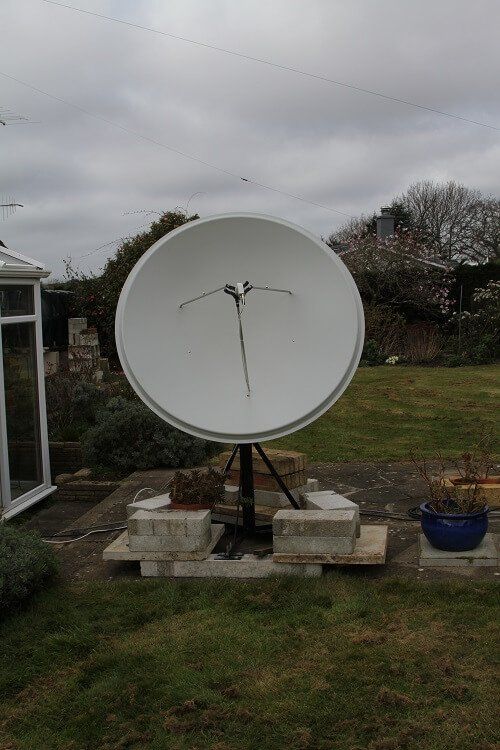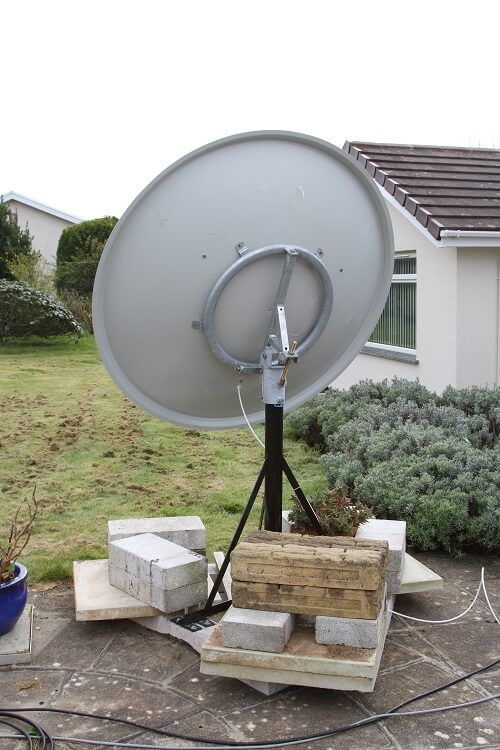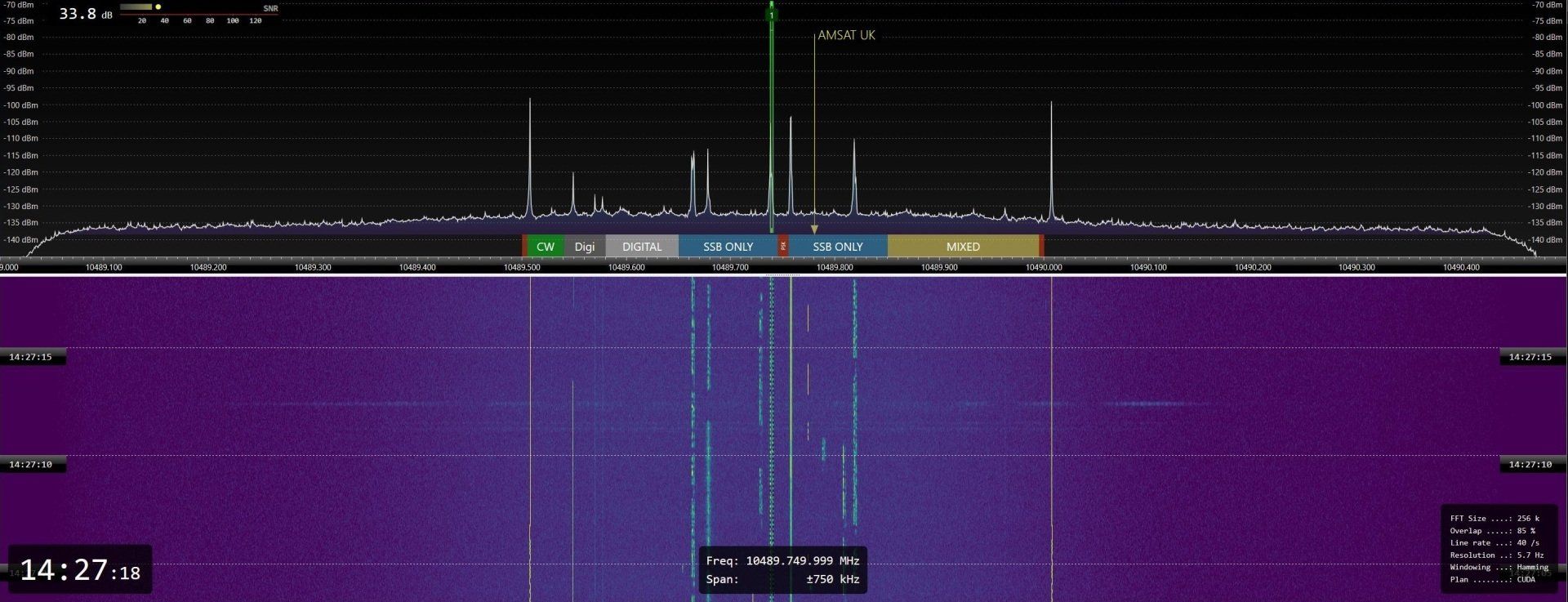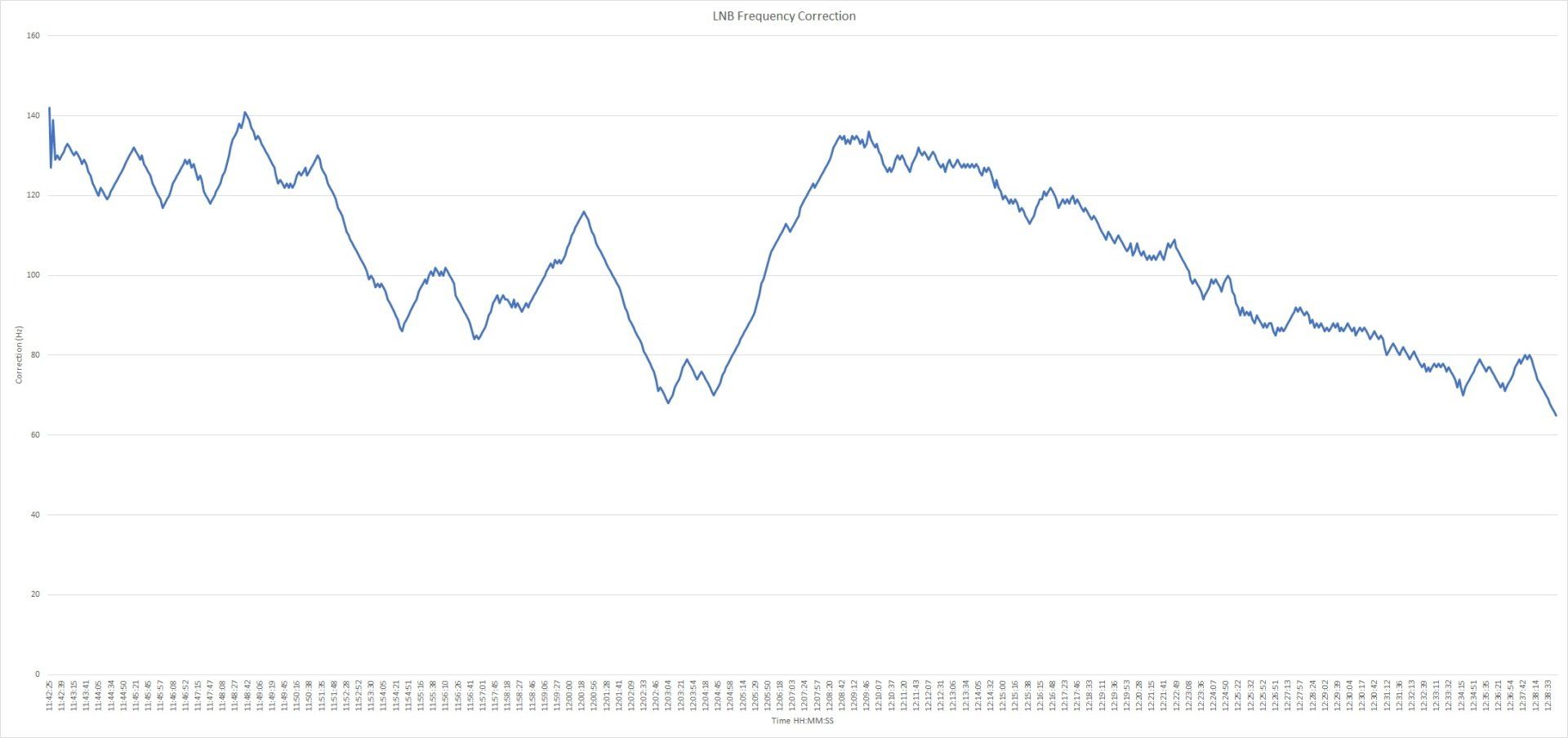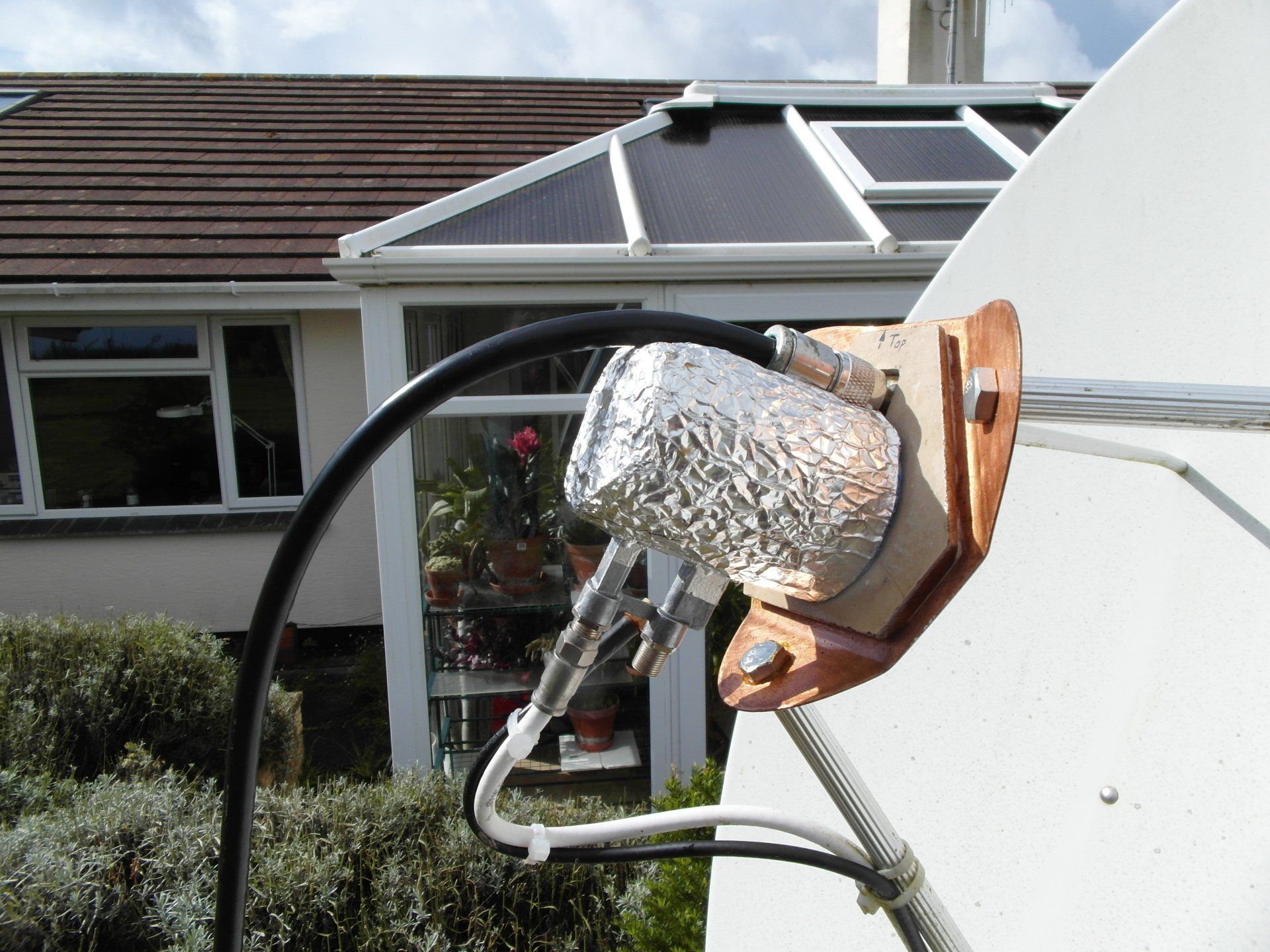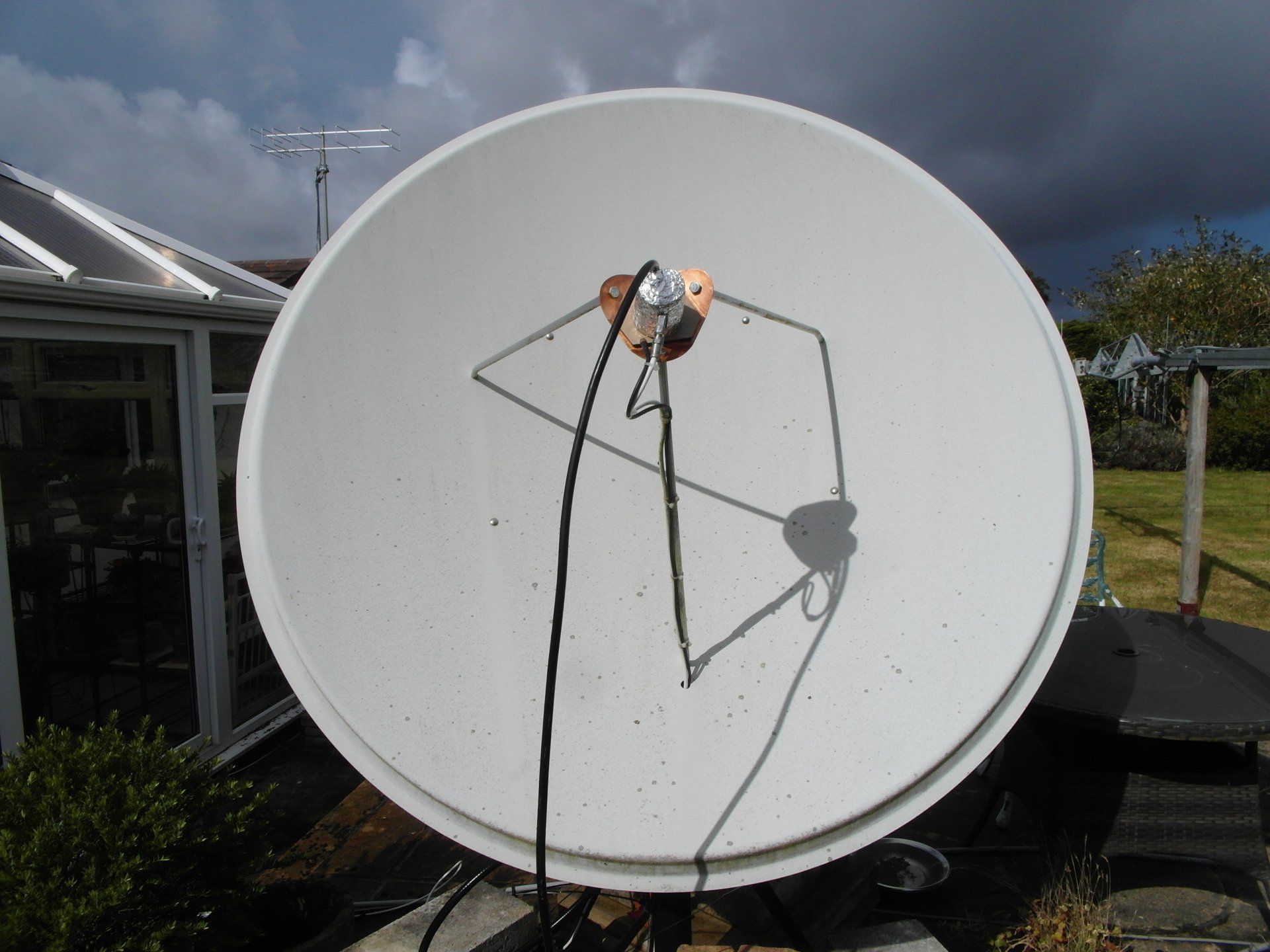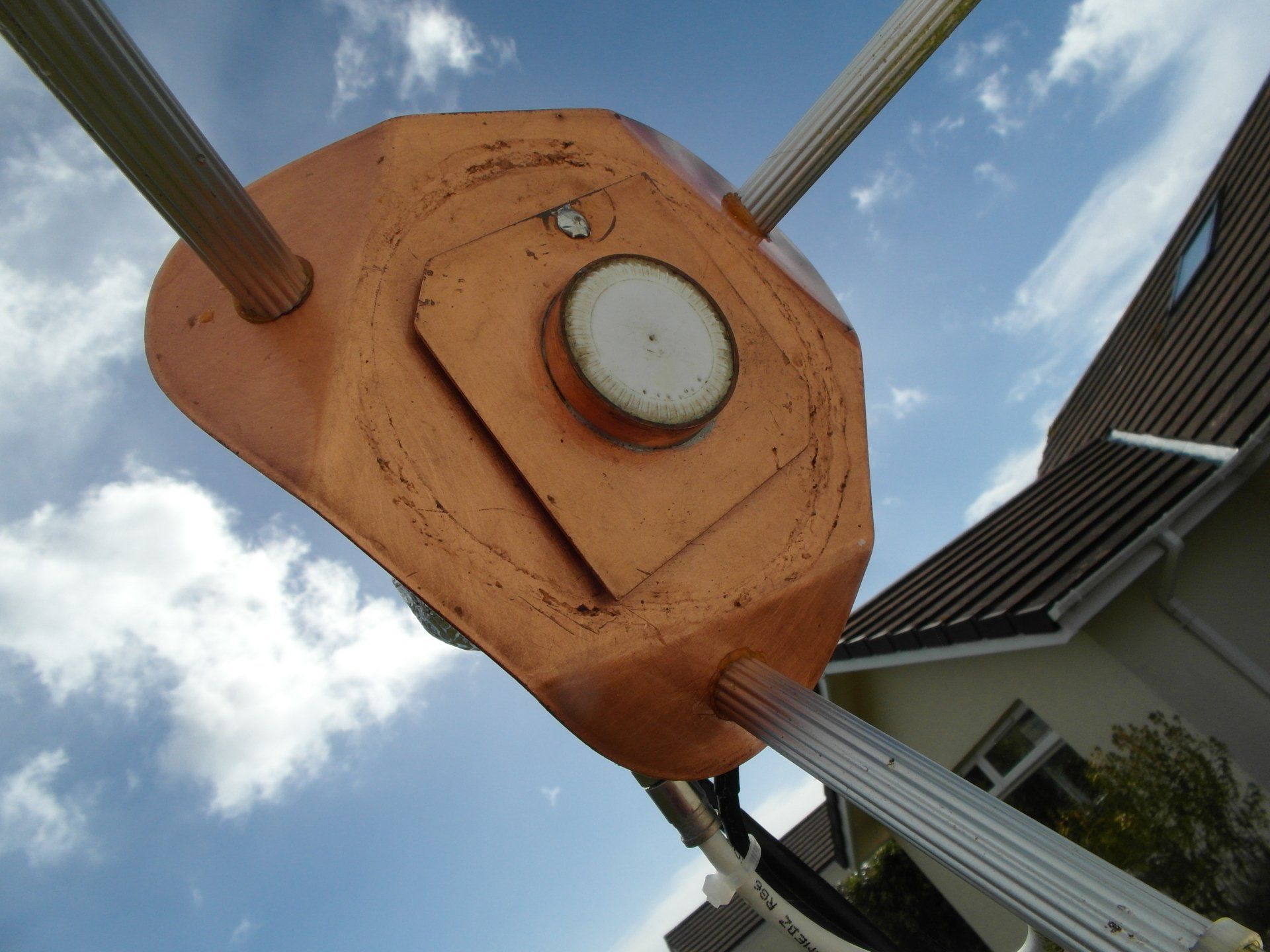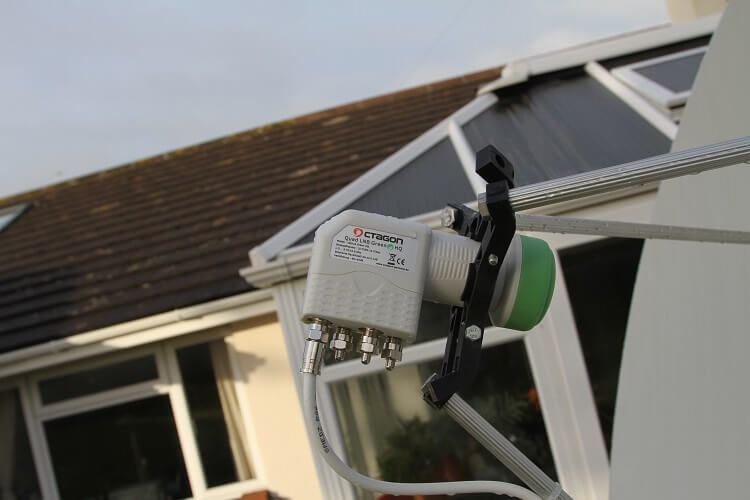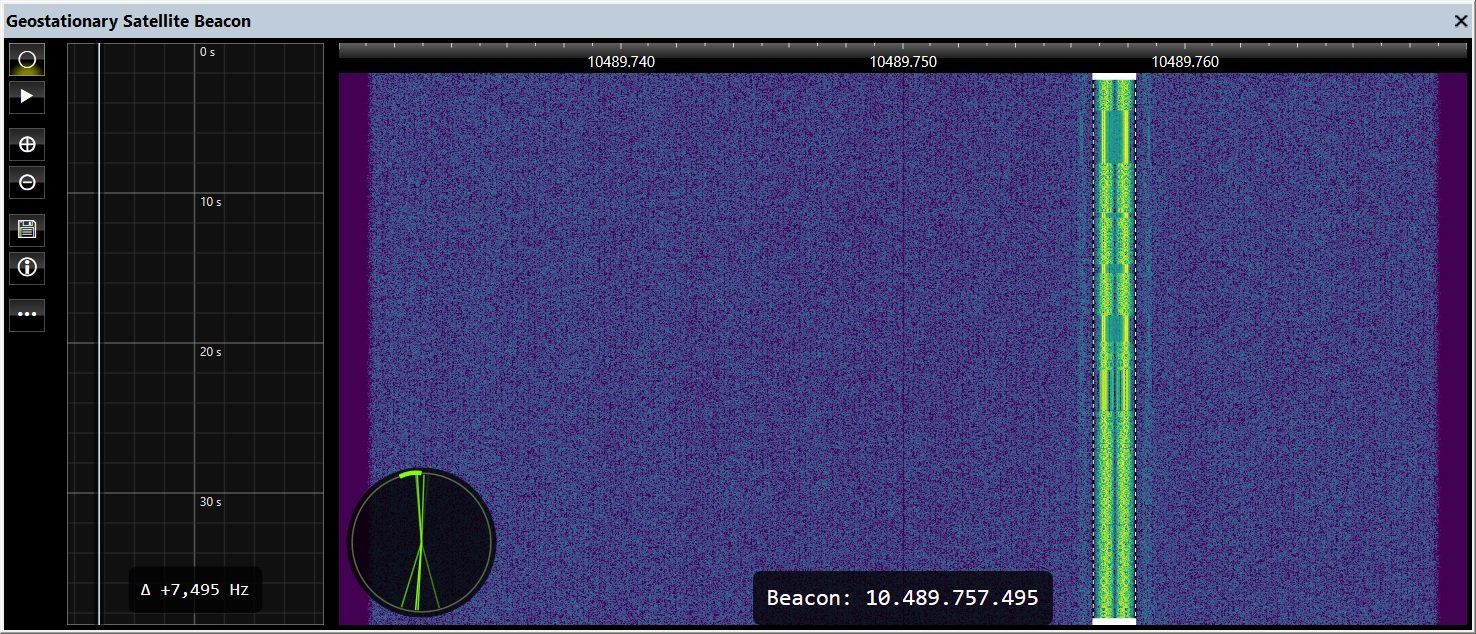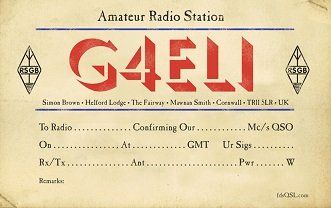G4ELI's Station
Antenna
The antenna is a 1.4m prime focus dish from www.satellitesuperstore.com . The ratio of focal length to aperture size (F/D Ratio) is 0.41, Gain at 10.95GHz 41.8dB. As you see, the stand is kept in place with ~ 280kg of lintel, breeze block and slab.
The dish was initially aligned using the sun on March 1st, 2019 because at 10:16 the sun's azimuth and elevation was the same as Es'Hail 2, so the shadow of the feed would be directly over the center of the dish. Afterwards the dish was further optimised by monitoring the CW beacon on the narrow band transponder and adjusting azimuth and elevation.
LNB
Frequency
The output frequency of the LNB is ~739MHz, the LNB also has considerable gain - up to 65dB!
Power
A LNB must be powered, the supply voltage determines the polarisation. Typically 13v for vertical and 18v for horizontal polarisation. Power supplies are not expensive, for example Labgear PSUFC on Amazon.
POTY from Sigi DG9BFC
October 3rd, 2021 - I now use a POTY from Sigi as my preferred feed, it is excellent! Sigi's solution has:
- Improved TXCO which greatly reduces LNB drift due to change in temperature - don't forget the heat from the sun is reflected back on the LNB.
- Extra insulation to reduce temperature changes as clouds pass in front of the sun.
- N-Type connector for the 2.4 GHz transmit connection, using a good coax such as Ecoflex 16 Plus is much better than a SMA to N-Type pigtail cable.
- A near-perfect circular polarisation and a very low SWR at the 'sweet spot'.
The image below shows what is sometimes referred to as transponder bloom - noise received at 2.4GHz and retransmitted at 10GHz. If you see this then more receive gain is not needed.
SNR on receive is improved as this feed uses the complete dish, also sidelobes are suppressed by the choke rings.
Octagon 0.1db Quad High Gain
Testing with an Octagon 0.1db Quad High Gain HD Ready Universal low-noise block downconverter (LNB). This is very sensitive but drifts - for SSB / CW it must be modified, either change the crystal to a TCXO or add support for an external reference such as the Leo Bodnar GPSDO. Drift is much worse in the daylight as it is temperature dependent.
Stability
There is a special feature in SDR Console which locks the receiver to the digital beacon on the narrow-band transponder, so reception is perfect.
From the ribbon bar select View, More Options, Geostationary Beacon.
Which SDR?
Receiver
There are many options, the most popular being:
- Airspy R2,
- RTL Dongles,
- SDRplay RSP1A, RSP2.
When tuned to QO-100 the output frequency of the LNB is ~ 739MHz, so the receiver must cover this frequency.
Transceiver
The transceiver must support transmit at 2.4GHz and receive at 739MHz, preferably at the same time (full duplex).The currently supported options are:
Both work well, the recommended solution is Pluto:
- Price,
- TX output power,
- Ease of programming.
| Feature | LimeSDR | Pluto |
|---|---|---|
| RF chip | LMS7002M | AD9363 (hack to AD9364). |
| Frequency range | 100 kHz – 3.8 GHz | 325 MHz to 3.8 GHz |
| 70 MHz to 6.0 GHz (AD9364hack) | ||
| Ext. reference | Yes | With modification |
| RX sensitivity | Good | Good |
| Stability | Good | Good |
| Bandwidth | 50Mhz | 6MHz (200 MB/s) |
| TX power | -6dBm | +2dBm |
| Case included | No, eBay | Plastic, metal available from eBay |
| Software API | Good | Very good |
| Other | USB noise - needs a very good cable or metal case | |
| USB | USB3 | USB2 |
| Network | No | Yes (USB <=> ethernet adapter) |
